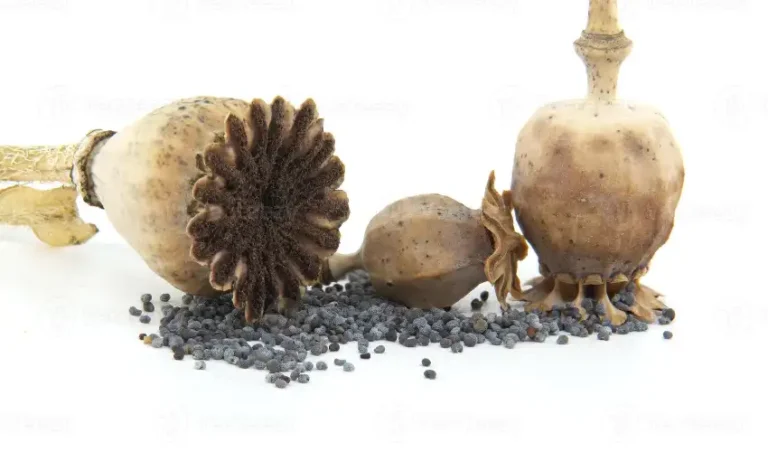Poppy pods, often discarded after the flowers bloom, are a treasure trove of natural dye potential. These pods contain pigments that can create beautiful, earthy tones for textiles, yarns, and crafts. In this article, we’ll walk you through how to extract vibrant natural dyes from poppy pods and use them to create stunning, eco-friendly dyed materials.
Why Use Poppy Pods for Natural Dyeing?
Poppy pods offer a unique, rich color palette, ranging from soft pinks to deep reds, depending on the variety of poppy used. Unlike synthetic dyes, natural dyes like those derived from poppies are biodegradable, non-toxic, and environmentally friendly. They also create one-of-a-kind hues, making them perfect for DIY projects, clothing, and art.
What You’ll Need
Before you start, gather the following supplies:
- Poppy pods (either from your garden or purchased)
- Water
- A large pot for boiling
- A strainer or cheesecloth
- Mordant (such as alum) for color fixation
- Fabric, yarn, or other materials you want to dye
- Rubber gloves (optional for protection)
Step 1: Preparing the Poppy Pods
First, collect the dried poppy pods. You’ll need to allow them to fully dry out to ensure they contain the dye compounds. Once dry, remove any seeds or plant debris from the pods. Depending on the size of the pods, you may want to crush or break them up to release more pigment during the dyeing process. This can be done using a hammer or mallet.
Step 2: Preparing the Dye Bath
To extract the dye, fill a large pot with water and add the crushed or whole poppy pods. Bring the water to a simmer and allow the pods to soak for about an hour. The longer you let the pods simmer, the deeper and more concentrated the color will be. Stir occasionally to help release the pigment.
You can test the color strength by dipping a small piece of fabric into the dye bath. If the color is too light, continue simmering the pods. If it’s too dark, you can dilute the solution with water.
Step 3: Mordanting Your Fabric
Before dyeing, it’s essential to treat your fabric with a mordant. Mordants help the dye bond with the fibers and ensure long-lasting color. Alum is a common mordant that works well with natural dyes like those from poppy pods. Dissolve the alum in water according to the instructions on the package, and soak your fabric in the solution for about an hour.
Afterward, rinse the fabric thoroughly and squeeze out the excess water. This step ensures the mordant will properly adhere to the fibers, allowing the dye to set.
Step 4: Dyeing the Fabric
Once your dye bath is ready and your fabric is mordanted, it’s time to dye. Wearing gloves (optional but recommended), submerge your fabric into the dye bath, stirring gently to ensure even coverage. You can leave the fabric in the dye bath for anywhere from 30 minutes to several hours, depending on the depth of color you want to achieve.
For a lighter shade, remove the fabric earlier. For a more intense color, let it soak longer. Keep in mind that the fabric may appear darker in the dye bath than it will once dried.
Step 5: Rinsing and Drying
Once the fabric has reached the desired color, remove it from the dye bath and rinse it under cool water until the water runs clear. This removes any excess dye and helps the color set. Hang or lay the fabric flat to dry in a well-ventilated area, away from direct sunlight to prevent fading.
Step 6: Finishing Touches
After your fabric is dry, you can choose to set the dye further by steaming or pressing the fabric. This is an optional step but can help ensure that the color lasts longer. Your natural dye from poppy pods is now complete and ready for use in a variety of projects, from clothing to crafts.
Tips for Successful Dyeing
- Test before dyeing large pieces: Always test your dye bath and mordant with a small swatch of fabric to make sure you’re happy with the color.
- Experiment with different fabrics: Natural fibers like cotton, linen, and silk absorb natural dyes more readily than synthetic ones.
- Create layered effects: You can dip the fabric multiple times to achieve different shades or create ombre effects.
- Store leftover dye: You can store any leftover dye for future use. Simply refrigerate it in an airtight container.
Conclusion
Creating natural dyes from poppy pods is a rewarding and eco-friendly way to add beautiful, organic colors to your fabrics and crafts. With just a few simple steps, you can transform these humble plant materials into stunning hues that enhance your creations. Whether you’re looking to dye a dress, a scarf, or yarn for knitting, poppy pods offer a fantastic alternative to chemical dyes, providing rich, earthy tones that are as unique as the natural world itself.
